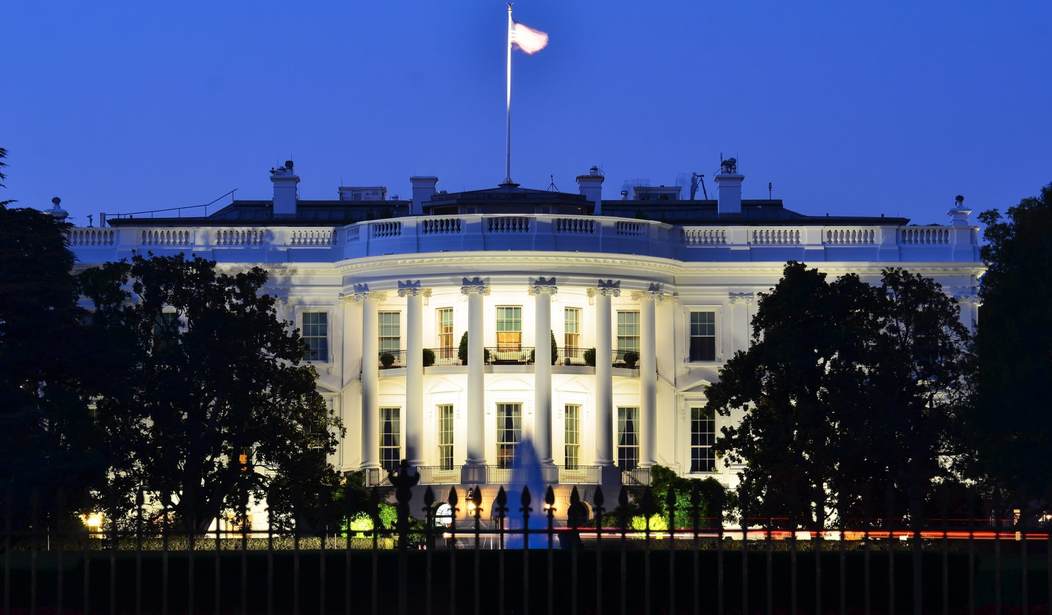It’s almost two weeks since the release of “13 Hours,” the movie about the Sept. 11, 2012 terrorist attacks in Benghazi, Libya, that killed four Americans. In the modern news cycle, that’s time enough for the importance of this movie to be buried by news of the blizzard from which the East Coast is now digging out. But I found this movie so good that I went to see it twice.
Both times, I came away wondering the same thing. What, precisely, was President Obama doing during the hours — all those many hours — in which the Americans in Benghazi, abandoned by their leaders in Washington, fought for their lives?
What was Obama doing, amid the comforts and command centers of the White House, while State Department officer Sean Smith and Ambassador Chris Stevens were choking on the smoke of a diesel-fueled inferno at the poorly secured U.S. diplomatic compound in Benghazi? What was Obama doing during the hours in which the assault targeted the CIA annex near the compound? What was he doing when al Qaeda-linked terrorists fired mortars at the Americans defending the annex, killing former SEALs Glen Doherty and Tyrone Woods?
Benghazi in that season was six hours ahead of Washington. The attacks began about 9:45 P.M. in Benghazi, and went on intermittently all night, with the deadly mortar assault coming at about 5:15 A.M. It took another five hours, and then some, before the last of the survivors, assembled at the airport, along with the bodies of the four dead Americans, were flown out of Benghazi — not by American forces, but aboard a Libyan C-130 military cargo plane. Thus the roughly 13 hours referred to in the title of the movie, from approximately 9:45 PM on the evening of Sept. 11, until about 10:30 A.M on the morning of Sept. 12.
In Washington, six hours behind, that timing corresponded to roughly 3:45 P.M. on Sept. 11 until 4:30 A.M., Sept. 12, with Americans killed during the first eight hours of this terrible span. When mortar fire killed Doherty and Woods, about 5:15 A.M. in Libya, it was about 11:15 P.M., Sept. 11, in Washington. In other words, on the White House clock, the assault in Benghazi began mid-afternoon, Washington time, and went on for the rest of the afternoon and the entire evening. It was close to midnight, Washington time, when the mortar onslaught killed Woods, who was based in Benghazi, and Doherty, who had flown in that night from Tripoli as part of a small rescue squad. They died as part of a small group of warriors defending the other Americans under attack.
What was America’s president doing, during all those hours? No one expects the U.S. president to involve himself directly in every firefight that might endanger Americans in far away places. But he is the commander-in-chief, the executive at whose desk the buck is supposed to stop. And there was nothing ordinary about what happened in Benghazi. The symbolically loaded date was Sept. 11. The first target was an American diplomatic compound, which was hit with AK-47 fire and rocket propelled grenades, invaded, plundered and torched with diesel fuel — killing the ambassador and one of his staff. The next target was a nearby “secret” CIA annex, housing Americans. While far from U.S. shores, what took place in Benghazi was a brazen, heavily armed, terrorist assault on America and its citizens. It was the first time in 33 years that an American ambassador had been murdered.
From the Americans under attack, there were desperate calls for help. It was the president who had the authority to dispatch American forces in the region to race to Libya, to help. Whatever the debate over how quickly such help could have arrived, or how effective it might have been, this much is clear: No such help came.
Nor have we ever learned the full timeline of what Obama himself did that evening. Plenty has been asked. Too little has been answered. Various observers, myself included, have tried to fill in the gaps, piecing together whatever could be discerned from afar, or urging that more be done to find out.
But there are still big gaps. We know that when the assault began in Benghazi, Obama was making his Sept 11 official rounds at the Walter Reed National Military Medical Center in Washington. We know that after after leaving Walter Reed, Obama had a 5 P.M. meeting already scheduled at the White House with then-Defense Secretary Leon Panetta, at which Obama was certainly informed of the attack.
And, as I outlined on PJ Media more than three years ago, in “Benghazi and the Missing Obama 9/11 Timeline,” we know from the sole press release put out by the White House that evening, Sept. 11, 2012 (which made no mention of Benghazi), that sometime before about 8 P.M. Obama phoned Israel’s Prime Minister Benjamin Netanyahu (well after midnight in Israel). To judge by the contents of the ensuing White House press release, Obama made this apparently urgent evening call not to talk about Benghazi — where his ambassador to Libya had just been killed, and the assault was far from over — but to quash a story gaining legs that day in the media, and damaging to Obama’s 2012 reelection campaign, that Obama had snubbed Netanyahu’s request for a meeting at the United Nations General Assembly opening later that month.
We know that at about 10 P.M., Obama spoke by phone with then-Secretary of State Hillary Clinton. Shortly after that call, the State Department put out a press release under Clinton’s name, implying that “inflammatory material posted on the internet” (or, as Clinton later described it, a “hateful” video) had provoked the Benghazi attacks. As far as I’m aware, we’ve heard nothing further about Obama’s activities after that phone call with Clinton. The next time he turns up on the radar is the following morning, more than 12 hours later, at 10:43 A.M., making public remarks about the American deaths in Benghazi from the White House Rose Garden (in which he, like Clinton, implied that the video, not terrorism, was to blame: “We reject all efforts to denigrate the religious beliefs of others.”).
Maybe there’s information out there that I’ve missed. If anyone knows anything more, please write in. But as far as I’m aware, there has been no full accounting, no timeline, that gives us anything close to a full picture of what the president did that long evening, or the extent to which, as the assault went on and on in Benghazi, he concerned himself with doing everything in his power to help. Or, as the available information suggests, he didn’t.
Of course, to borrow a line from Hillary Clinton, “What difference, at this point, does it make?” The behavior of Clinton herself still matters, for the obvious reason that she is running to be the next president. But Obama is wrapping up his final year in office, and shows no interest in changing his ways. Does it really matter, by now, what he did or did not do on Sept. 11, 2012?
That brings me back to the matter of the film, “13 Hours,” and why it is so good. It is good because it depicts, in ways that any audience can understand, the hell that was unleashed against those Americans in Benghazi. It is good because it it clarifies, graphically, that what took place was a planned terrorist assault (viewers can decide for themselves how that squared with Obama’s claims of a receding tide of war, and al Qaeda on the run). It is good because it shows the folly of pitting wishful diplomacy against murderous realities.
At core, “13 Hours” is a movie about the vital human business of keeping faith, of doing what’s right — who did, and who did not. This film shows how, in the face of folly from on high, and the deadly results on the ground, a small band of American warriors saw what had to be done, and did it. They stepped up to keep faith with themselves and their fellow Americans — while back in Washington, their leaders, including America’s commander-in-chief, did no such thing. For all the American military might that was standing by that night, “spinning up” beyond Libya’s borders, no help was sent into Libya. All that arrived, courtesy of orders from above, was an unmanned drone, a vehicle in this case for bearing witness — a microcosm of President Obama’s foreign policy.
That betrayal was the essential horror of the Benghazi story (a betrayal compounded by the U.S. administration’s negligence that preceded the attack, and amplified by the official obfuscations that followed). That failure at the top, along with the heroism of the warriors on the ground, is what comes across in this film. Obama himself is not shown in the movie, neither is Clinton. Obama is a distant voice, leading from behind, speaking briefly in the background, lauding the prospects for Libya, at the opening. The film shows us, up close, the Americans who were abandoned by their leaders back in Washington, and left fighting for their lives.
When it ends, you sit there in silence. This movie does not preach. But there are lessons to be drawn, and they pertain not only to Libya, but to America. The more we grasp of what happened in Benghazi, the bigger the questions ought to loom about what we expect of our leaders — and the missing piece, the timeline yet to be filled in, the full story of what America’s president was doing, or not doing, on the evening of Sept, 11, 2012, as this battle played out, hour after hour, in Benghazi.









Join the conversation as a VIP Member